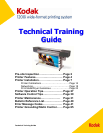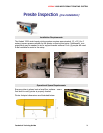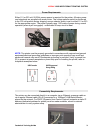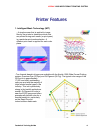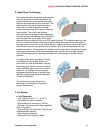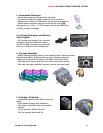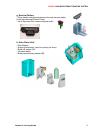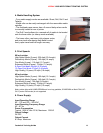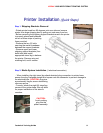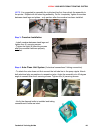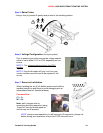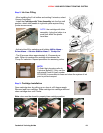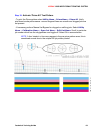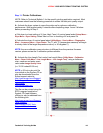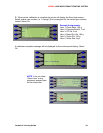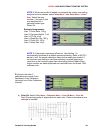
KODAK 1200i WIDE-FORMAT PRINTING SYSTEM
Technical Training Guide 5
2. Rapid Dryer Technology
The advanced dual-component drying system
uses the principle of conducted heat to dry
printed images with much greater efficiency
than can be achieved with hot air dryers. The
media web is fed over a heated aluminum
nose that is curved to maintain intimate
contact with the back of the web for effective
heat transfer. The nose is an isolated
extrusion that incorporates three longitudinal
fins with an electrical heating strip mounted to
each fin inside the curve (each of the three
electrical heating strips provide up to 323 watts of power). This design evens out heat
flow to minimize cold spots under high density printed areas across the web without
the long warm-up time of a much thicker section. Ambient air flow is used to pull away
moisture and improve drying efficiency by another 30% over that achieved with the
heated nose alone. The application of ambient air flow also allows the system to apply
more drying power at a lower peak temperature for reduced risk of media damage.
Overall the drying system uses approximately 25% less energy over other drying
systems.
An ambient fan driven air plenum is used
to distribute air flow evenly across the
print width. Air flow is downward, carrying
heat away from the print zone to improve
nozzle reliability and to reduce the risk of
edge curl. An intelligent control system
regulates electrical power to achieve and
maintain temperature set points between
35 and 55 degrees C.
The air plenum may be lowered by
removing two locking pins to perform
printer maintenance.
3. Ink System
a. Ink Reservoir:
- 6 ink reservoirs (ML, CL, Y, K, M, C)
- Ink bottles are easy to replace
- Encrypted for ink monitoring (700 ml)
- One set of ink lines; switch over capability
(Dye or Pigment)
- Plug and Play ink refill bottle (700 ml) with
septum/needle interface
- Clean-hands installation
- Mechanical color keying of bottle



